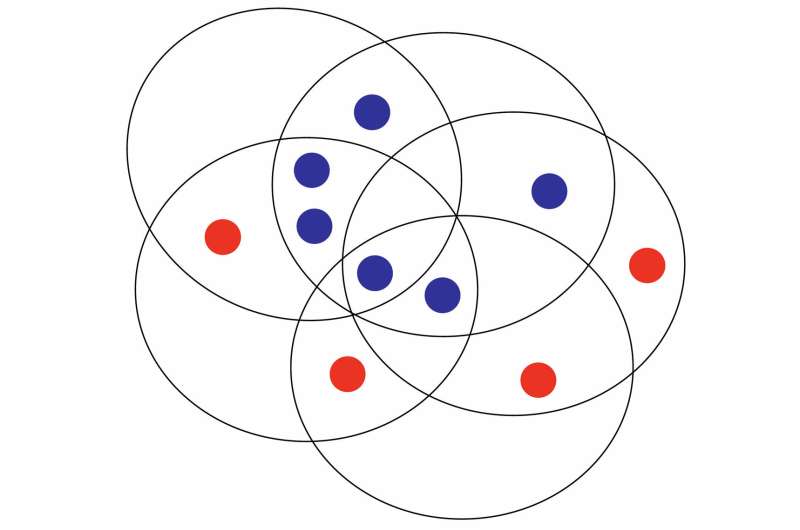A new approach to an old question: How do we actually cooperate?

In the animal kingdom, birds band together to ward off predators, and honeybees work collectively to benefit the entire hive. Animals of the human persuasion can act cooperatively too, at times, though this behavior is not completely understood.
Princeton doctoral student Olivia Chu and her advisor Corina Tarnita, a theoretical biologist, investigate how cooperation among people is affected by population structure.
Chu will present their work this week at the American Physical Society March Meeting in Boston, and she will also participate in a press conference describing the work. Information for logging on to watch and ask questions remotely is included at the end of this news release.
Humans tend to cluster into groups—political, religious, familial, professional and so forth—rather than being homogenously mixed. Group memberships affect our decisions to cooperate—or not—with others. So, how does cooperation emerge under such circumstances?
"Group memberships affect the structure of social interactions, determining to a large extent who meets with whom. They also set the context and frequency under which those interactions take place," Chu said. Chu and Tarnita built upon the "evolutionary set theory" modeling framework that Tarnita and colleagues introduced in 2009, which assumes that people belong to groups and interact only with others who are in the same groups.
Interactions in their study take place within the setting of the "donation game" (a modified version of the "prisoner's dilemma") in which a cooperator offers a benefit to another player at a personal cost, whereas a "defector" selfishly offers nothing. Chu and Tarnita consider this framework to be more realistic for studying human dynamics than previous network-based approaches because it allows for people to simultaneously have multiple group affiliations. "From these local, group-level pair-wise interactions, can we see the emergence of cooperation on a large scale across the population?" Chu asked.
The answer given by Tarnita and colleagues in 2009 was "yes." However, that model had an unrealistic premise—group entry was free to anyone who wanted to join. In real life, this is clearly not the case as there are often barriers to group entry. In the current model, Chu and Tarnita incorporate one type of barrier to group entry that is determined by group size: The larger the group, they reasoned, the less likely it is to accept new members. To refine their model, the team investigated whether this barrier changes the outcome with respect to cooperation.
Chu and Tarnita found that cooperation still emerges, but that it is most favored when they allow for the existence of "loners" in the population—people who, due to barriers, are temporarily not members of any group. Loners are essential, Chu explained, "because they keep group sizes lower than they would have been without barriers to group entry."
Smaller groups allow cooperation to thrive, while making the system as a whole more resilient, by limiting the destructive influence of a defector exploiting a group of cooperators. Chu cautions against drawing too much from one model amid a sea of evolutionary game theory models. Nevertheless, their recent work shows, reassuringly, that there may be hope for maintaining cooperation in our world.
More information: The 2019 APS March Meeting presentation "Evolutionary Dynamics in a Group Population Structure with Barriers to Group Entry," by Olivia Chu, Vitor V. Vasconcelos and Corina E. Tarnita, will take place Monday, March 4, at 1:03 p.m. in room 259A of the Boston Convention and Exhibition Center. Abstract: meetings.aps.org/Meeting/MAR19/Session/B63.8
Journal information: Proceedings of the National Academy of Sciences
Provided by American Physical Society



















